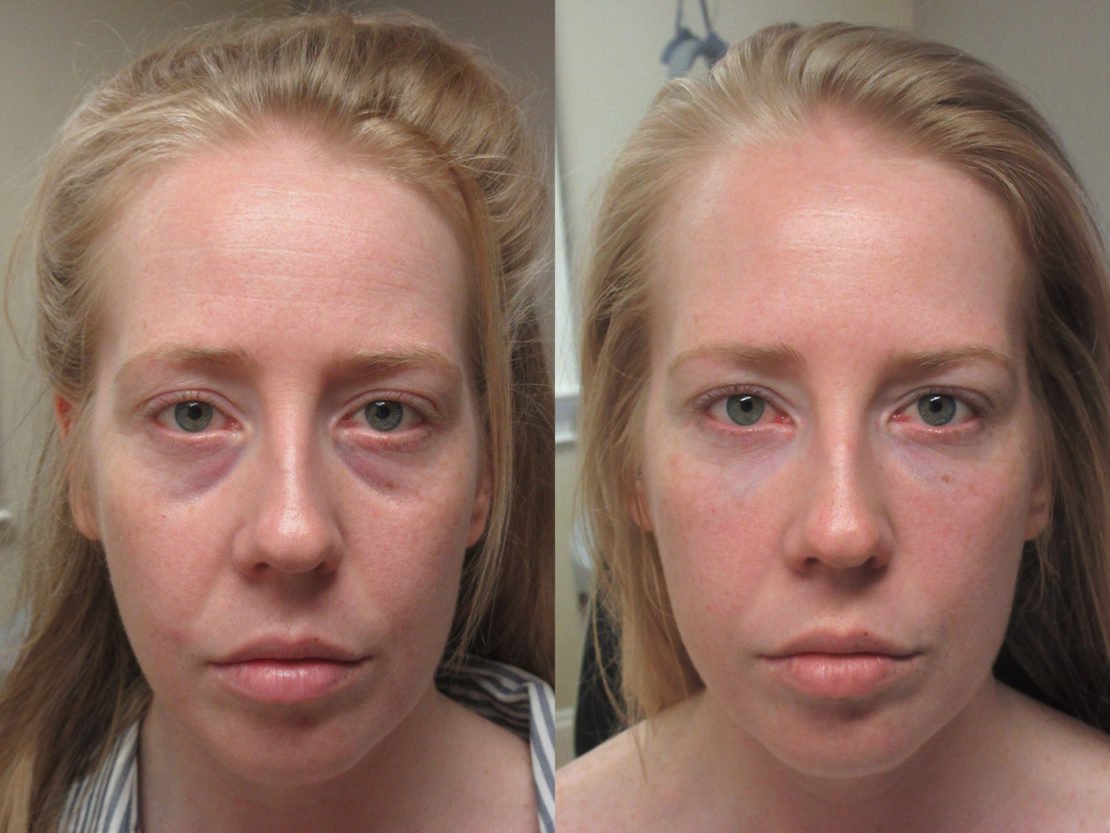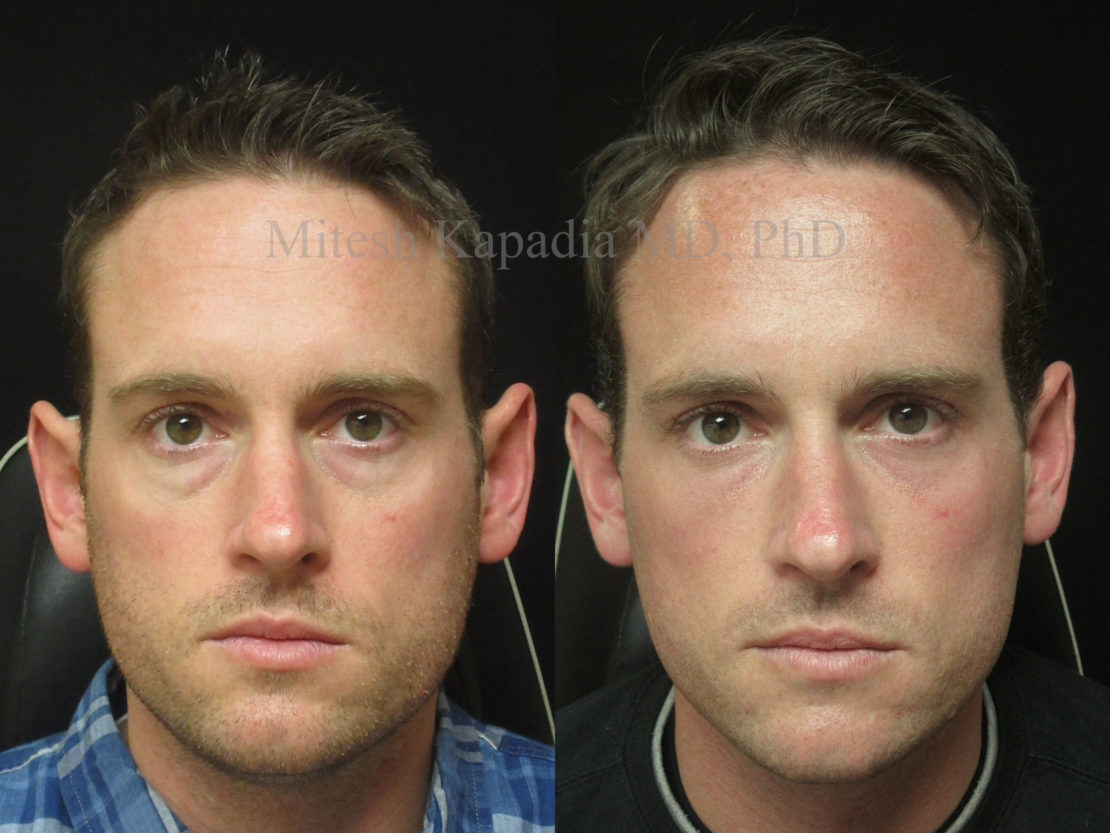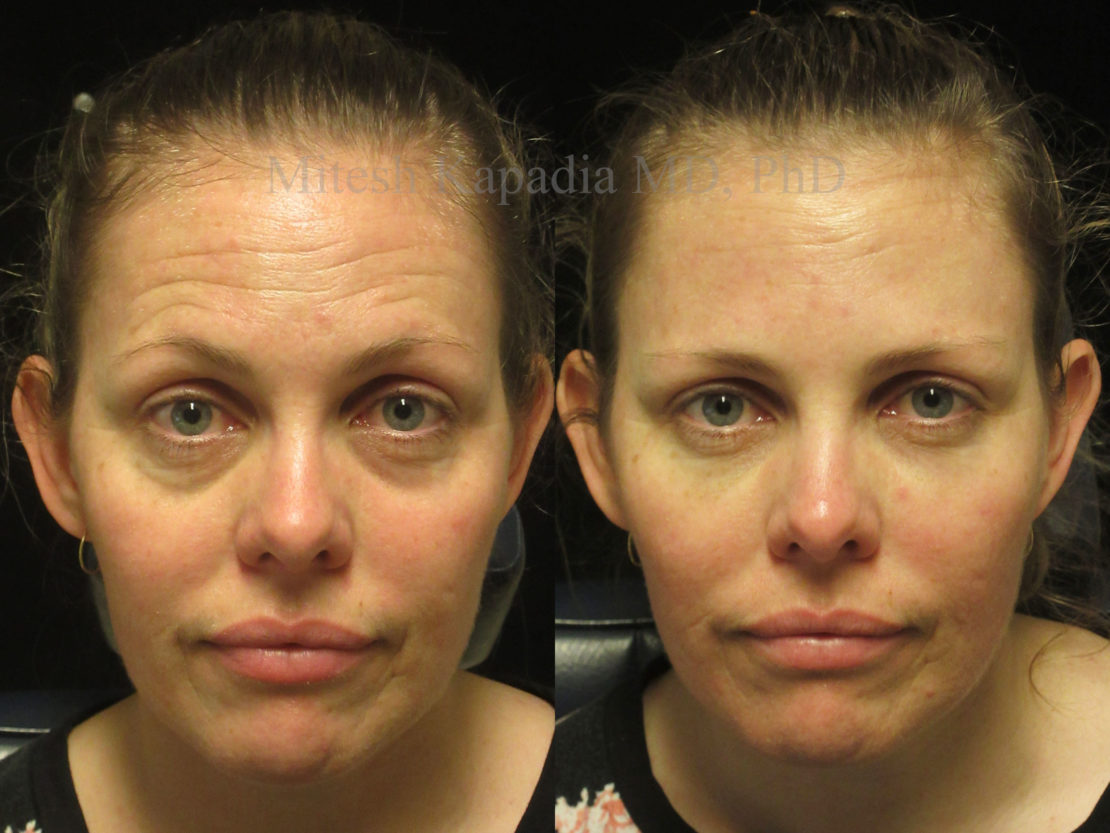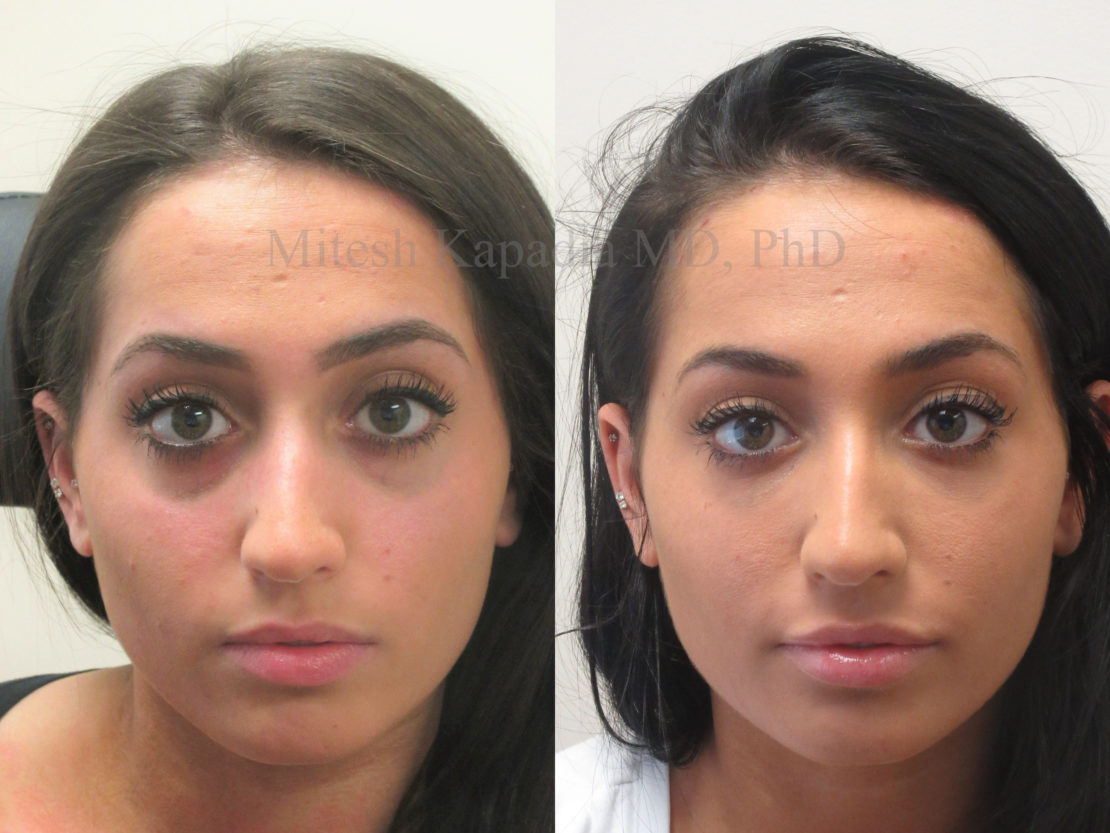This page shows before and after photos of actual patients who have had under eye filler injections with Dr. Kapadia. Filler injections to the lower eyelids can be a powerful tool to help patients with hollowing under their eyes. Under eye fillers can reduce dark circles due to shadowing to give patients a refreshed, less tired look. Fillers can sometimes also be used to camoflage mild under eye bags, especially in patients in their 20s and 30s. This procedure is often referred to as non-surgical blepharoplasty.
Many patients who need fillers under their eyes also need filler in their midface (inner cheeks) to create a balanced look and smooth transition from the lower eyelid to the cheek.
Patient 1 - Before and three weeks after lower eyelid and cheek fillers and Botox.

These photos show a woman in her mid-30s before and after filler injections to the lower eyelid and midface, as well as Botox for lines in the forehead and glabella. Three vials of filler were used to produce this result.
Prior to treatment, there is a harsh groove on the inner aspect of her lower eyelids, commonly referred to as a tear trough. The depth of the groove gives her a tired, sad look. After the treatment she looks refreshed and less tired. Notice how much happier she looks even though her facial expression is the same.
Patient 2 - Before and three weeks after lower eyelid and midface fillers.

These photos show a man in his early 30s before and three weeks after lower eyelid and midface fillers. Two vials of filler were used to produce this result.
Prior to the procedure, the patient had significant under eye puffiness, which gave him a tired look. Fillers were used to help hide bags by by adding volume to the area directly underneath the puffiness. After the procedure he looks refreshed, without looking overdone or puffy.
With surgery, it would have been possible to remove the under eye bags more completely. However, sometimes patients aren't ready for surgery. In the right patients, fillers can sometimes be used to help hide the bags to buy some time. Surgery can always be performed in the future. This procedure only works for patients with firm skin and mild bags. More severe bags are best treated with surgery.
Patient 3 - Before and three weeks after lower eyelid and midface fillers and Botox

These photos show a woman in her 30s before and after lower eyelid filler injections and Botox. Before treatment, she has prominent under eye circles, which make her look tired and aged. She also have deep forehead lines due to over active facial expressions. Reducing her under eye shadowing and forehead lines gives her a more youthful, less tired look.
Patient 4 - Before and three weeks after lower eyelid and midface fillers

These photos show a woman in her mid-50s before and after lower eyelid and midface fillers. The fillers help blend the eyelid-cheek junction and give her a refreshed, less-tired look by creating a smoother eyelid-cheek junction. 3cc of filler were used to produce this result.
Patient 5 - Before and three weeks after lower eyelid and midface fillers

These photos show a patient in her mid-20s before and three weeks after lower eyelid and midface fillers. Two vials of filler were used to produce this result. Before the treatment, there is hollowing along the bony orbital rim. Blending the eyelid-cheek junction with fillers helps reduce dark circles under the eyes and leads to a less tired look. Hollowing along the lower eyelids can be present in all ethnicities, but is especially common in patients of middle eastern or south asian descent.
About lower eyelid fillers
Lower eyelid filler injections are performed in the office with topical numbing cream. Patients typically find say that the injections feel "weird" but are not painful. Bruising and swelling can definitely happen anytime filler is injected in the under eye area, which is very vascular. If possible, we recommend at least a few days off of work after having this done. More severe bruising is possible, but uncommon. The procedure takes approximately ten minutes and can often be performed the same day as a consultation if the patient is a good candidate. We recommend stopping all blood thinners including aspirin, Motrin/ibuprofen and Alleve for at least two weeks prior to minimize bruising. Patients can drive themselves home after the procedure.
Dr. Kapadia can give you a price estimate at the time of your consultation, but most patients need between one and three vials of filler to complete this treatment. Our prices for filler injections are listed in the prices section of this website.
As mentioned above, filler injections can sometimes be used to treat patients with mild under eye bags. More significant bags are best treated with lower blepharoplasty surgery. Some of the differences between lower eyelid surgery and filler injections are discussed in the articles section of this website, but a consultation is required to determine which treatment would be best for you.
